|
Bernard Widrow, Stanford University, USA | |
|---|---|
| Honorary Speech | |
| Abstract | TBA. |
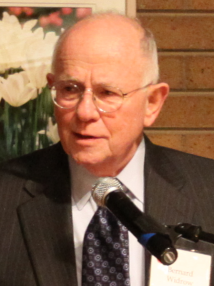
|
Bernard Widrow received the S.B., S.M., and Sc.D. degrees in Electrical Engineering from the Massachusetts Institute of Technology in 1951, 1953, and 1956, respectively. He joined the MIT faculty and taught there from 1956 to 1959. In 1959, he joined the faculty of Stanford University, where he is currently Professor of Electrical Engineering, Emeritus. He began research on adaptive filters, learning processes, and artificial neural models in 1957. Together with M.E. Hoff, Jr., his first doctoral student at Stanford, he invented the LMS algorithm in the autumn of 1959. Today, this is the most widely used learning algorithm, used in every MODEM in the world. He has continued working on adaptive signal processing, adaptive controls, and neural networks since that time. Dr. Widrow is a Life Fellow of the IEEE and a Fellow of AAAS. He received the IEEE Centennial Medal in 1984, the IEEE Alexander Graham Bell Medal in 1986, the IEEE Signal Processing Society Medal in 1986, the IEEE Neural Networks Pioneer Medal in 1991, the IEEE Millennium Medal in 2000, and the Benjamin Franklin Medal for Engineering from the Franklin Institute of Philadelphia in 2001. He was inducted into the National Academy of Engineering in 1995 and into the Silicon Valley Engineering Council Hall of Fame in 1999. Dr. Widrow is a past president and member of the Governing Board of the International Neural Network Society. He is associate editor of several journals and is the author of over 125 technical papers and 21 patents. He is co-author of Adaptive Signal Processing and Adaptive Inverse Control, both Prentice-Hall books. A new book, Quantization Noise, was published by Cambridge University Press in June 2008. |
|
Erol Gelenbe, Imperial College, UK | |
|---|---|
| Deep and Extreme Learning with Densely Clustered Random Neural Networks | |
| Abstract | The Random Neural Network (RNN) is a spiking model for neuronal ensembles that has been used for both modeling and understanding the behaviour of natural systems such as the somatosensory system of rats, and learning based engineering applications in computer vision, image compression, packet network routing and Software Defined Networks, and for combinatorial optimisation. It is a recurrent network with a highly efficient and fast exact solution based on the product form, and has a fast O(n3) recurrent network learning algorithm. It has also been used for Reinforcement Learning in the design of the patented Cognitive Packet Network routing system. This talk will discuss our recent work in using the RNN for Deep and Extreme Learning. In particular we will show how dense clusters of soma to soma interactions can be modeled with the RNN and demonstrate the results obtained with such multiple layer deep networks that are applied to a variety of instances of classification problems, as well as to the dynamic control of task assignment in the Cloud. |
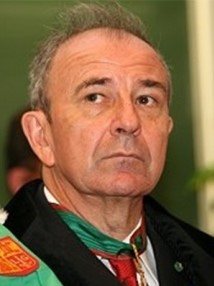
|
Erol Gelenbe pioneered new stochastic network methods to predict the performance of computer systems and networks, including neural computation. He was elected Fellow of both the IEEE and of ACM. He is also a Fellow of five National Academies of Science or Engineering, and of Academia Europaea. He has graduated 73 PhD students, over 45 of whom work in Europe, with many others working in Australia, China, the USA, Canada and Singapore. He invented G-networks (1991) to model the performance of computer networks that undergo self or external control. He also invented the Random Neural Network (1989) that models the spiking behaviour of neuronal systems, and showed for the first time (1992) that recurrent networks learn in O(n3) time-complexity. His engineering contributions include the FLEXSIM approach to Flexible Manufacturing System Simulation, and the training and leadership of the team that created the QNAP performance engineering software package. His papers have appeared in the top journals in several areas: in computer science such as JACM and CACM, in Physics such as the Physical Review and the Proc. of the Royal Society A, in Electrical Engineering such as the Proceedings of IEEE, IEEE Trans. Computers, IEEE Trans. Comms., and in Bio and Neuro Informatics such as the IEEE Trans. Neural Networks, Neural Computation and ACM/IEEE Trans. Bioinformatics and Computational Biology. For his contributions he was made Knight of the Legion of Honour (France) and Commander of Merit (Italy), and awarded three Doctorates Honoris Causa |
|
Guang-Bin Huang, Nanyang Technological University, Singapore | |
|---|---|
| Extreme Learning Machines (ELM): Enabling Pervasive Learning and Pervasive Intelligence | |
| Abstract | Although many researchers consider that machine learning (ML) is part of artificial intelligence (AI), this talk will articulate the differences between AI and machine learning (ML) has been becoming more and more significant. With the dramatically increased data and complexity of the applications, instead of AI, machine learning (ML) will most possibly play dominant roles in the end. This talk will also analyze more and more biological evidences found in animals, which have been pointed out by Extreme Learning Machine (ELM) theories. This talk also wishes to share with audiences the trends of machine learning: 1) turning point from machine learning engineering to machine learning science; 2) convergence of machine learning and biological learning; 3) from human and (living) thing intelligence to machine intelligence; 4) from Internet of Things (IoT) to Internet of Intelligent Things and Society of Intelligent Things; 5) pervasive learning and pervasive intelligence will come true; 6) convergence of machine intelligence and Darwinism. |

|
Guang-Bin Huang a Full Professor (with tenure) in the School of Electrical and Electronic Engineering, Nanyang Technological University, Singapore. He serves as an Associate Editor of Neurocomputing, Cognitive Computation, neural networks, and IEEE Transactions on Cybernetics. He was awarded “Highly Cited Researcher” (in both Engineering and Computer Science fields) (2014, 2015), and listed in “The World's Most Influential Scientific Minds” by Thomson Reuters for both 2014 and 2015. He received the best paper award from IEEE Transactions on Neural Networks and Learning Systems (2013). He was nominated for Singapore President Science Award (2016). He is a member of Elsevier's Research Data Management Advisory Board. His current research interests include big data analytics, human computer interface, brain computer interface, image processing/understanding, machine learning theories and algorithms, extreme learning machine, and pattern recognition. He is Principal Investigator of BMW-NTU Joint Future Mobility Lab on Human Machine Interface and Assisted Driving, Principal Investigator (data and video analytics) of Delta – NTU Joint Lab, Principal Investigator (Scene Understanding) of ST Engineering – NTU Corporate Lab, and Principal Investigator (Marine Data Analysis and Prediction for Autonomous Vessels) of Rolls Royce – NTU Corporate Lab. He has led/implemented several key industrial projects (e.g., Chief architect/designer and technical leader of Singapore Changi Airport Cargo Terminal 5 Inventory Control System (T5 ICS) Upgrading Project, etc). One of his main works is to propose a new machine learning theory and learning techniques called Extreme Learning Machines (ELM), which fills the gap between traditional feedforward neural networks, support vector machines, clustering and feature learning techniques. ELM theories have recently been confirmed with biological learning evidence directly, and filled the gap between machine learning and biological learning. ELM theories have also addressed “Father of Computers” J. von Neumann’s concern on why “an imperfect neural network, containing many random connections, can be made to perform reliably those functions which might be represented by idealized wiring diagrams.” |
|
Fuchun Sun, Tsinghua University, China | |
|---|---|
| ELM Methods for Robot Dexterous Operations Using Vision and Tactile Sensing | |
| Abstract | Generally speaking, robot is the last mile of automation, and dexterous hand is the last centimeter of the robot! Therefore it is highly expected that the next generation of robots should have better dexterious operation capability as compared with traditional ones, and hopefully, they will be broken from the aspects of perception, representation and fusion of cross-modal sensing information like human being. In this talk, the recent development of the robot dexterous operations will be reviewed and the big data structure of the next generation of robots will be analyzed. We will introduce how to use Extreme Learning Machine (ELM), for representation and fusion of tactile and visual sensing, and present some experiment results. Furthermore, some key techniques for dexterous operations used in IROS 2016 robotic grasping and manipulation competition, where Tsinghua Team got the first place, will be introduced. Finally, we will present some future directions. |

|
Fuchun Sun is professor of Department of Computer Science and Technology and President of Academic Committee of the Department, deputy director of State Key Lab. on Intelligent Technology & Systems, Tsinghua University, Beijing, China. His research interests include intelligent control, robot precise operation and teleportation using visual and tactile sensing. Dr. Sun is the recipient of the excellent Doctoral Dissertation Prize of China in 2000 by MOE of China and the Choon-Gang Academic Award by Korea in 2003, and was recognized as a Distinguished Young Scholar in 2006 by the Natural Science Foundation of China. He served as an associated editor of IEEE Trans. on Neural Networks during 2006-2010, IEEE Trans. on Fuzzy Systems since 2011 and IEEE Trans. on Systems, Man and Cybernetics: Systems since 2011. |
|
M. Brandon Westover, Harvard Medical School, USA | |
|---|---|
| Why Brains Need Computers: How Big Data and Machine Learning can Improve Neurology | |
| Abstract | Beyond-human-level GO and chess are here, while self driving cars and human-level computer vision are rapidly becoming reality. Meanwhile, despite hype about "precision medicine" and "big medical data", the day-to-day practice of neurology continues to rely almost entirely on human expertise. In this talk I will introduce a range of real-world clinical problems in which data science and machine learning are beginning to improve neurology. These problems include: predicting which patients with brain injuries will have seizures; detecting seizures and seizure-like patterns in brain monitoring (electroencephalography, EEG) streaming data; diagnosing epilepsy in patients who have it, and avoiding mis-diagnosing epilepsy in patients who don't; predicting which patients with epilepsy will benefit from available drugs and which patients will not; predicting whether a comatose patient will eventually recover consciousness; detecting impending cerebral infarction (stroke) in patients with brain aneurysms; automating the delivery of anesthesia to patients with acute brain swelling or life-threatening seizures; computing a patient's level of consciousness from the EEG and EKG signals; diagnosing delirium; and tracking sleep stages. I will show how my laboratory has been using machine learning, and Extreme Learning Machines (ELM) specifically, to begin solving several of these problems. Along the way, I will point out areas where there is opportunity for members of the ELM community to make important contributions to improving care for patients with neurological problems. |
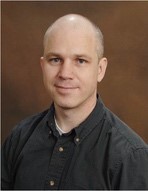
|
Dr. M. Brandon Westover, MD, PhD, completed medical training and a PhD degree in Physics at Washington University School of Medicine in St. Louis. He is currently an Assistant Professor of Neurology at Harvard Medical School and a neurologist specializing in epilepsy and clinical neurophysiology at the Massachusetts General Hospital (MGH) where he directs the MGH Critical Care EEG Monitoring Service. Clinically, he is interested in applying electroencephalography (EEG) to help care for patients with acute neurological conditions such as delirium, anoxic brain injury, status epilepticus, and delayed cerebral ischemia following subarachnoid hemorrhage. His research interests include automated methods for interpreting clinical EEG data, closed-loop control of sedation and analgesia, biomedical informatics, probabilistic analysis of medical decisions, and the neurophsyiology of pain, sedation, delirium, and sleep in critically ill patients. Dr. Westover’s overarching research goal is to improve neurology and particularly neurocritical care through the application of engineering principles, applied mathematics, and computational approaches. |
|
Amaury Lendasse, University of Iowa, USA | |
|---|---|
| ELM for Big Incomplete Data | |
| Abstract | Traditionally, Big Data refers to technologies and initiatives that involve data that is too diverse, fast-changing or massive for conventional technologies, skills and infrastructure to address efficiently. Said differently, the volume, velocity or variety of data is too great. In this talk, we will extend this definition of Big Data in order to add the incompleteness attribute to the existing volume, velocity and variety attributes. We will introduce the traditional methods to deal with incomplete (or missing) data and we will present novel approaches using ELM to deal with Big Data. Several real examples from industry and from the medical field will be presented in order to illustrate the different methods. |
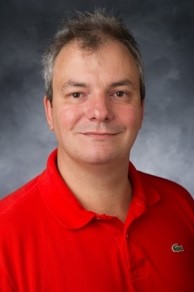
|
Amaury Lendasse was born in 1972, in Belgium. He received a M.S. degree in Mechanical Engineering from the Universite Catholique de Louvain (Belgium) in 1996, a M.S. in Control in 1997 and a Ph.D. in Applied Mathematics in 2003 from the same university. In 2003, he was a Postdoctoral Researcher in the Computational Neurodynamics Lab at the University of Memphis. From 2004 to 2014, he was a Senior Researcher and an Adjunct Professor in the Adaptive Informatics Research Centre in the Aalto University School of Science (better known as the Helsinki University of Technology) in Finland. He has created and lead the Environmental and Industrial Machine Learning at Aalto. He is now an Associate Professor at The University of Iowa (USA) and a visiting Professor at Arcada University of Applied Sciences in Finland. He was the Chairman of the annual ESTSP conference (European Symposium on Time Series Prediction) and member of the editorial board and program committee of several journals and conferences on machine learning. He is the author or coauthor of more than 200 scientific papers in international journals, books or communications to conferences with reviewing committee. His research includes Big Data, time series prediction, chemometrics, variable selection, noise variance estimation, determination of missing values in temporal databases, nonlinear approximation in financial problems, functional neural networks and classification. |
|
Donald C. Wunsch II, Missouri University of Science & Technology, USA | |
|---|---|
| Extreme Learning Machines for Energy Applications | |
| Abstract | Energy applications are a fascinating source of prediction and other problems that exhibit nonlinearities, time delays, and nonstationary statistics. This makes them an ideal testbed for Extreme Learning Machines approaches. Some illustrative examples are reviewed, and some novel regulation approaches to condition data for ELM are also discussed. |
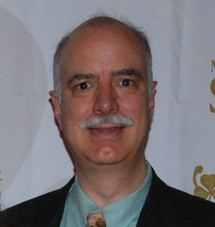
|
Donald Wunsch is the Mary K. Finley Missouri Distinguished Professor at Missouri University of Science and Technology (Missouri S&T). Earlier employers were: Texas Tech University, Boeing, Rockwell International, and International Laser Systems. His education includes: Executive MBA - Washington University in St. Louis, Ph.D., Electrical Engineering - University of Washington (Seattle), M.S., Applied Mathematics (same institution), B.S., Applied Mathematics - University of New Mexico, and Jesuit Core Honors Program, Seattle University. Key research contributions are: Clustering / Unsupervised Learning; Adaptive Resonance and Reinforcement Learning architectures, hardware and applications; Neurofuzzy regression; Traveling Salesman Problem heuristics; Robotic Swarms; and Bioinformatics. He is an IEEE Fellow and previous INNS President, INNS Fellow and Senior Fellow 2007-2013, NSF CAREER Award winner, and winner of the 2015 INNS Gabor Award. He served as IJCNN General Chair, and on several Boards, including the St. Patrick’s School Board, IEEE Neural Networks Council, International Neural Networks Society, and the University of Missouri Bioinformatics Consortium, Chaired the Missouri S&T Information Technology and Computing Committee as well as the Student Design and Experiential Learning Center Board. He has produced 18 Ph.D. recipients in Computer Engineering, Electrical Engineering, and Computer Science; has attracted over $10 million in sponsored research; and has over 400 publications including nine books. His research has been cited over 11,000 times. |
|
Zhaoyang Dong, University of Sydney, Australia | |
|---|---|
| Smart Grid Dynamic Security Assessment with ELM | |
| Abstract | Dynamic security assessment of smart grids has been increasingly important given the increasing grid connections of stochastic renewable power sources and complicated demand response. The ability to perform security assessment with real time data from grid operations can provide highly useful information to reduce the risks of instability or even blackout of the grid. In this presentation, an intelligent early-warning system to achieve reliable online detection of risky operating conditions will be presented. The proposed intelligent system (IS) consists of an ensemble learning model based on extreme learning machine (ELM) and a decision-making process under a multi-objective programming (MOP) framework. The randomness existing in individual ELM training is generalized and reliable classification results can be obtained. The decision-making is designed for ELM ensemble with optimized parameters capable of searching for the optimal outcome of the security assessment system. The model can provide multiple and switchable performances to system operators to satisfy different local dynamic security assessment (DSA) requirements. |
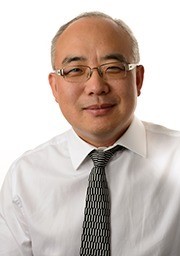
|
Zhaoyang Dong (M’99–SM’06) obtained his Ph.D. degree from the University of Sydney, Australia in 1999, where he is now Professor and Head of School of Electrical and Information Engineering. He was previously Ausgrid Chair and Director of the Ausgrid Centre of Excellence for Intelligent Electricity Networks (CIEN), the University of Newcastle, Australia. He also held academic and industrial positions with the Hong Kong Polytechnic University and Transend Networks (now TASNetworks), Tasmania, Australia. His research interest includes Smart Grid, power system planning, power system security, load modeling, renewable energy systems, electricity market, and computational intelligence and its application in power engineering. He is an editor of IEEE TRANSACTIONS ON SMART GRID, IEEE TRANSACTIONS ON SUSTAINABLE ENERGY, IEEE POWER ENGINEERING LETTERS and IET Renewable Energy Generation. |


